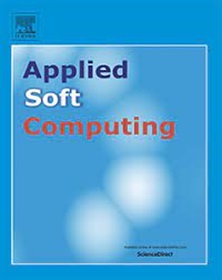有限服务区域约束下基于非对称多智能体路径规划的协同驾驶路径规划问题
IF 6.6
1区 计算机科学
Q1 COMPUTER SCIENCE, ARTIFICIAL INTELLIGENCE
引用次数: 0
摘要
移动和物流服务提供商运营着一个车队,每辆车服务于多个目标,面临着在考虑所有车辆的情况下规划高效和协作的驾驶路线的挑战。为了解决这一挑战,我们提出了一种新的基于非对称多智能体路径规划(AMAPP)问题的驾驶路线规划方法,该问题是经典的多旅行推销员问题(MTSP)的一个变体。给定一个由m个agent(车辆)组成的团队,它们必须访问位于真实路网中的n个目标,必须找到一组m个优化开放路径(计划),使得每个目标都只访问一次。优化目标是使计划中行驶距离最长的路径的行驶距离最小(最小-最大问题),使该协同操作在最短的时间内完成。在一些情况下,每个代理的服务区域是有限的(例如,一个城市的某些地区)。为了模拟这个现实世界的条件,应用了两个额外的约束:每个智能体的最大大地测量距离,以及每个智能体的最大目标空间距离。提出了一种具有两种新颖初始化方法的易于应用的遗传算法来解决这一路由规划问题。为了验证所开发的路线规划方法,并证明其适用性,在实际测试用例中对该方法进行了测试,结果表明该方法具有良好的性能。结果表明,有限服务区域约束的应用不仅降低了路线规划中最长路线的平均行驶距离,而且降低了所开发方案的平均运行时间。此外,采用基于TSPLIB实例的26个问题对所提遗传算法的性能进行了基准测试,其中,所提遗传算法在19个基准问题中获得了新的最佳已知解(Best Known Solution, BKS)值,在另外两个问题中获得了与BKS值相等的结果,证明了其优越性和鲁棒性。该方法可用于车队需要到达多个目的地的移动和物流服务的路线规划,如团体拼车和最后一英里配送。本文章由计算机程序翻译,如有差异,请以英文原文为准。
Cooperative driving route planning based on asymmetric multi-agent path planning problem with limited service area constraints
Mobility and logistics service providers operating a vehicle fleet and serving several targets with each vehicle are faced with the challenge of planning efficient and cooperative driving routes while considering all the vehicles. To address this challenge, we present a novel driving route planning method based on an Asymmetric Multi-Agent Path Planning (AMAPP) problem, a variation of the classical Multiple Traveling Salesmen Problem (MTSP). Given a team of agents (vehicles) that must visit targets located in a real road network, a set of optimized open paths (the Plan) must be found such that each target is visited exactly once. The optimization objective is to minimize the driving distance of the path with the longest driving distance in the Plan (a Min-Max problem) so that this cooperative operation can be completed in the least amount of time. In several cases, the service area for each agent is limited (e.g., certain districts in a city). To simulate this real-world condition, two additional constraints are applied: the maximum geodetic range for each agent, and the maximum spatial range of targets for each agent. An easy-to-apply Genetic Algorithm (GA) with two novel initialization methods is presented to solve this route planning problem. In order to validate the developed route planning method and demonstrate its applicability, the method was tested in a real-world test case where it showed a decent performance. The results show that the applied limited service area constraints not only decrease the average driving distance of the longest route in the route plan, but also reduce the average runtime of the developed solution. Additionally, the performance of the proposed GA was benchmarked using 26 problems based on the TSPLIB instances, where the proposed GA achieved new Best Known Solution (BKS) values for 19 benchmark problems and a result equal to the BKS value for another two problems, demonstrating its superiority and robustness. The developed method can be used for route planning of the mobility and logistics services requiring multiple destinations to be reached by a fleet of vehicles, such as group ride-sharing and last-mile delivery.
求助全文
通过发布文献求助,成功后即可免费获取论文全文。
去求助
来源期刊

Applied Soft Computing
工程技术-计算机:跨学科应用
CiteScore
15.80
自引率
6.90%
发文量
874
审稿时长
10.9 months
期刊介绍:
Applied Soft Computing is an international journal promoting an integrated view of soft computing to solve real life problems.The focus is to publish the highest quality research in application and convergence of the areas of Fuzzy Logic, Neural Networks, Evolutionary Computing, Rough Sets and other similar techniques to address real world complexities.
Applied Soft Computing is a rolling publication: articles are published as soon as the editor-in-chief has accepted them. Therefore, the web site will continuously be updated with new articles and the publication time will be short.
 求助内容:
求助内容: 应助结果提醒方式:
应助结果提醒方式:


